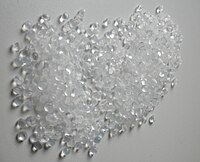
Photo from wikipedia
Presently, the application of natural fibres widely gains attention from academia and industries as an alternative material in the composite system. The introduction of the hybrid composite using natural and… Click to show full abstract
Presently, the application of natural fibres widely gains attention from academia and industries as an alternative material in the composite system. The introduction of the hybrid composite using natural and synthetic fibres is extensively investigated on the static mechanical properties. However, the investigation on the high strain-rates effect is less reported due to the difficulty of the experimental set-up as well as the limitation of dynamic testing apparatus. The split Hopkinson pressure bar (SHPB) was utilised in this present study to characterise the dynamic mechanical properties of the hybrid composite between E-glass with jute fibres at three different strain rates of 755, 1363, and 2214 s−1. Results showed that the dynamic compression stress and strain of the tested samples significantly influenced by the value of strain rates applied. The E-glass/jute sample exhibited the strain-rate dependent behaviour, whereby the higher dynamic mechanical properties were recorded when the higher strain rates were imposed. The difference between maximum dynamic stress was 12.1 and 23.9% when the strain rates were increased from 755 to 1363 s−1 and 1363 to 2214 s−1, respectively. In terms of compressive strain, the maximum compressive strain was recorded when the lower strain rates were imposed during testing.
Journal Title: Journal of Mechanical Engineering and Sciences
Year Published: 2020
Link to full text (if available)
Share on Social Media: Sign Up to like & get
recommendations!